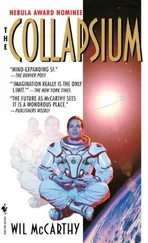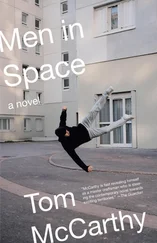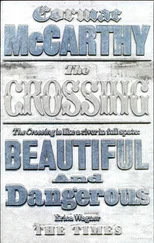“I’d like you to get the liver lady to go down the stairs and visit the motorbike enthusiast.”
“Now?” he asked.
“Now,” I said, “yes.”
Two minutes later I was standing at my window watching her-the real liver lady-shuffling out into the courtyard. I dragged Roger’s model over to the window so I could see both it and the courtyard at the same time. I picked up the motorbike enthusiast figure and placed him on one of the swings.
“Now,” I told Naz, “I’d like the motorbike enthusiast to go sit on the swing closest to him.”
Not half a minute later I saw the real motorbike enthusiast look up towards my building’s doorway. He was talking to someone; I couldn’t hear what was being said because the pianist was playing his Rachmaninov-but then I didn’t need to. The motorbike enthusiast looked up towards my window, then rose to his feet, walked over to the swing and sat on it.
“I’d prefer him to kneel on it,” I told Naz.
“Kneel?”
“Yes: kneel rather than sit. He should kneel in exactly the same position as he kneels beside his bike in.”
The figure had been cast in that position. Its limbs didn’t move. A few more seconds, and the real motorbike enthusiast changed his position on the swing so he had one knee on the seat.
“And now…” I said. “The pianist! He can go and watch.”
I made the pianist figure do just that: cross over to his window and peer out. Seconds later the piano music stopped below me; then the sound of a chair being pushed back, then footsteps-then his real bald pate popped out of his real window. I lifted the model up and rested it against the window sill so I could look down on the model’s head poking out at the same time as I looked at the real one. The distance made them both look the same size.
Before I sent them all back to their posts, I had the motorbike enthusiast give the swing a hard push. As he did this I did the same thing to the model swing. I watched them both swing. The model swing swung about two and a half times for each time the real swing swung. It also stopped before the real one did. I stayed at my window for a long time, watching the diminishing movements of the real swing. I remembered wind-up musical toys, Fisher Price ones, how they slow down as their mechanism unwinds right out to its end, until it seems that no more music will come from them-but then if you nudge them just a little, they always give one last half-chime, and another half-half-chime, and still more, less and less each time, for up to hours-or weeks-after they first ground to a halt.
The next day I placed my model on my living-room floor. I moved the figures around once more and issued instructions down the phone to Naz as I did this-only today I didn’t go and look. Just knowing it was happening was enough. I had the concierge pick up the liver lady’s rubbish bag, the motorbike enthusiast kneel in the lobby for two hours, the pianist sit on the closed lid of his piano facing his window for another two-and all the while, as they did this for real, I sat in the same spot on my living-room floor. The day after that I lay beside the model looking at it from the same angle as the sun did. My gaze burst in through the upper staircase window and flooded the floor’s patterned maze, then slowly-very slowly, almost imperceptibly-glazed, lost its focus, darkened and retreated, disappearing from the furthest edge of floor four hours and seven minutes after it had first entered. I did this for each floor I’d previously measured: four hours and seven minutes for the top down to three hours and fourteen minutes for the second.
I only left the building-the whole re-enactment area, I mean: the building and the courtyard and the stretch of streets between there and Naz’s office, with its bridge and sports track-twice during the next month. The first time was to go shopping. I’d been having all that done for me, but one day I got an urge to go and check up on the outside world myself. Nothing much to report. The second time was when I noticed that my old, dented Fiesta which was parked beside the sports track had a flat tyre. I hadn’t driven it in months, and didn’t plan to any time soon-but when I saw the flat tyre I remembered the tyre place beside my old flat: the one I’d paused beside the day the Settlement came through, uncertain whether to go home or press on to the airport.
As soon as I’d remembered it, I started seeing the tyre shop clearly in my mind: its front windows, the pavement where its sign stood, the café next to it. I remembered that a garish model baked-beans tin was mounted on the café’s roof beside a pile of tyres. More tyres had been lined up on the street outside, parked upright in a rack. As these details came back to me, the whole place-which when I’d lived beside it had seemed to me so mundane that I’d barely even noticed it-took on the air of something interesting. Intrigued, I decided to visit it. I borrowed some tools from the motorbike enthusiast, replaced the flat tyre with the spare one and then drove back to where I used to live to have the flat one fixed.
The place didn’t seem to have changed since I’d last seen it. It still had tyres lined up in a rack on the street outside and more tyres piled up on its roof beside the large-scale garish model baked-beans tin that advertised the next door café. The tyres were normal tyres, real ones, and looked miniature next to the giant tin, like toys. More tyres were leaning in stacks against the shop front, like you see at go-kart tracks. Behind these, painted announcements advertised special deals on tyres both new and part-worn or free fitting. On the pavement outside, a small rectangular contraption stood upright: a waist-high board skewered by a pole set into a heavy base. In the breeze the board span quickly round the pole, flashing two messages at passers-by in quick succession. Both messages said “TYRES”.
There was a more elaborate advertisement swaying around on the pavement a few feet away: a child dressed in a Michelin Man suit. The suit gave him an obese white tyre-girth that swayed as he moved. He was maybe ten, eleven. I could tell it was a boy because he wasn’t wearing the suit’s head. Two older boys had this: these two were standing by the tyre shop’s entrance, kicking the head to one another like a football. As I pulled up they stopped kicking it and sauntered over to my car. They looked at my tyres very earnestly, craning their necks in an exaggerated way-imitating their parents, doubtless, or whoever it was that owned this shop.
I stepped out of the car. “You’ve got a dent,” the oldest boy said. He must have been fifteen.
“I know that,” I told him. “That’s not why I’m here. I’m here because I’ve got a flat tyre.”
The slightly younger boy who’d been kicking the head with him had moved round the car to check the tyres on the passenger side.
“It’s in the boot,” I told them.
I walked round to the back of the car and opened it up. The two boys peered inside, like gangsters in movies-in those scenes where the gangsters open up a car boot in which they’ve stashed a body or a cache of guns. These boys were thinking of those scenes too as I opened up the boot for them: I could tell. They peered in; then the oldest one reached in and lifted the tyre out. The younger tried to help him, but he brushed his hand aside. The youngest one, the one in the Michelin Man suit, had waddled over and tried to join in, but the middling one shoved him away again.
“You’re meant to stand out in the street!” he told him, raising his voice.
“You’re not in charge of me!” the youngest one shouted back.
“Shut up, both of you!” the oldest told them.
The middling one looked down. His face flushed red with hurt. The youngest one swaggered triumphantly beside him in his suit. The oldest boy carried the tyre into the shop. I followed him. The middling boy slouched in behind me but stayed in the doorway, keeping the youngest out. There was no one else in the shop.
Читать дальше












